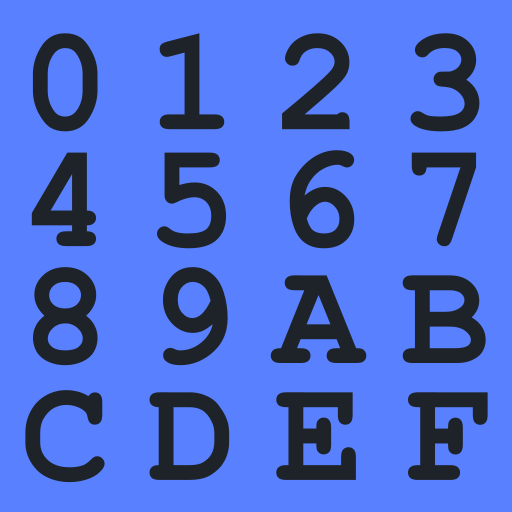Base16 Encoding (Hexadecimal) - The Basics
 Cloud Tuned
Cloud Tuned
Base16 Encoding (Hexadecimal) - The Basics
Base16 encoding, commonly known as hexadecimal or simply hex, is a numeral system that uses 16 distinct symbols to represent values. These symbols are the digits 0-9 and the letters A-F (or a-f). Hexadecimal is widely used in computing and digital electronics because it provides a more human-friendly representation of binary-coded values.
Key Aspects of Base16 Encoding
1. Character Set:
- Base16 uses 16 characters: 0-9 to represent values 0 to 9 and A-F (or a-f) to represent values 10 to 15.
2. How It Works:
- Hexadecimal encoding represents binary data by converting each 4-bit group (nibble) into a single hex digit.
- Each byte (8 bits) is represented by two hex digits.
Base16 Encoding Process
1. Convert Binary Data to Hexadecimal:
- Each byte of binary data is split into two 4-bit nibbles.
- Each nibble is then converted to its corresponding hex value.
Example
Let's encode the string "Hi" using Base16:
1. Convert to Binary:
- ASCII values for "Hi":
H: 01001000 i: 01101001
2. Split Each Byte into Two Nibbles:
H: 0100 (4) 1000 (8) i: 0110 (6) 1001 (9)
3. Convert Each Nibble to Hexadecimal:
H: 4 8 i: 6 9
4. Combine the Hex Digits:
- The encoded string for "Hi" is "4869".
Base16 Alphabet Table
+--------+-----+--------+-----+--------+-----+--------+-----+
| Binary | Hex | Binary | Hex | Binary | Hex | Binary | Hex |
+--------+-----+--------+-----+--------+-----+--------+-----+
| 0000 | 0 | 0100 | 4 | 1000 | 8 | 1100 | C |
| 0001 | 1 | 0101 | 5 | 1001 | 9 | 1101 | D |
| 0010 | 2 | 0110 | 6 | 1010 | A | 1110 | E |
| 0011 | 3 | 0111 | 7 | 1011 | B | 1111 | F |
+--------+-----+--------+-----+--------+-----+--------+-----+
Applications of Base16 Encoding
1. Memory Addresses: Hexadecimal is used to represent memory addresses in computing due to its compact representation of binary data.
2. Color Codes in Web Design: Colors in HTML/CSS are often specified using hex codes, such as #FFFFFF for white and #000000 for black.
3. Data Representation: Hex is commonly used to display binary data in a human-readable format, such as in debugging tools, error messages, and binary file viewers.
4. MAC Addresses and IP Addresses: Network interfaces often use hex notation to represent addresses, like in MAC (Media Access Control) addresses.
Decoding Base16
To decode a Base16 encoded string, the process is reversed:
1. Split the Hex String into Pairs of Characters:
- Each pair of hex characters represents a byte.
2. Convert Each Pair to Binary:
- Map each hex character to its 4-bit binary equivalent.
- Combine pairs to form the original bytes.
Example in Python
Here's a simple example of encoding and decoding using Python:
# Encode
original_data = b"Hello"
encoded_data = original_data.hex()
print(encoded_data) # Output: 48656c6c6f
# Decode
decoded_data = bytes.fromhex(encoded_data)
print(decoded_data) # Output: b'Hello'
Summary
Base16 encoding (hexadecimal) is a straightforward and widely-used method for representing binary data in a readable and compact format. By using 16 distinct symbols (0-9 and A-F), it allows for easy interpretation and debugging of binary data, especially in fields like computing and digital electronics. The simplicity and efficiency of hexadecimal make it an essential tool for developers and engineers.
Subscribe to my newsletter
Read articles from Cloud Tuned directly inside your inbox. Subscribe to the newsletter, and don't miss out.
Written by
